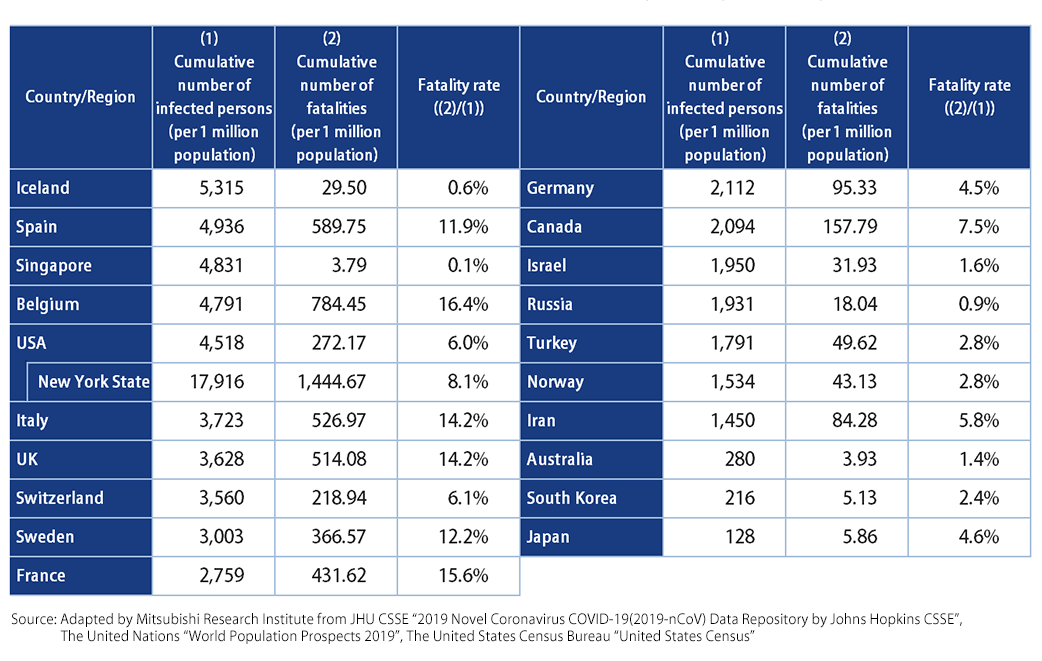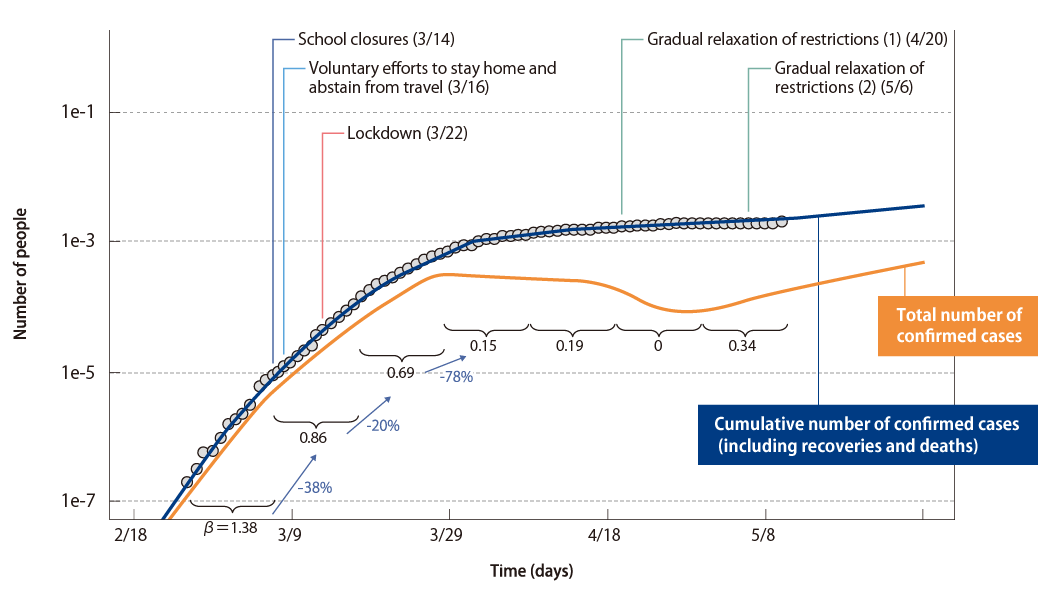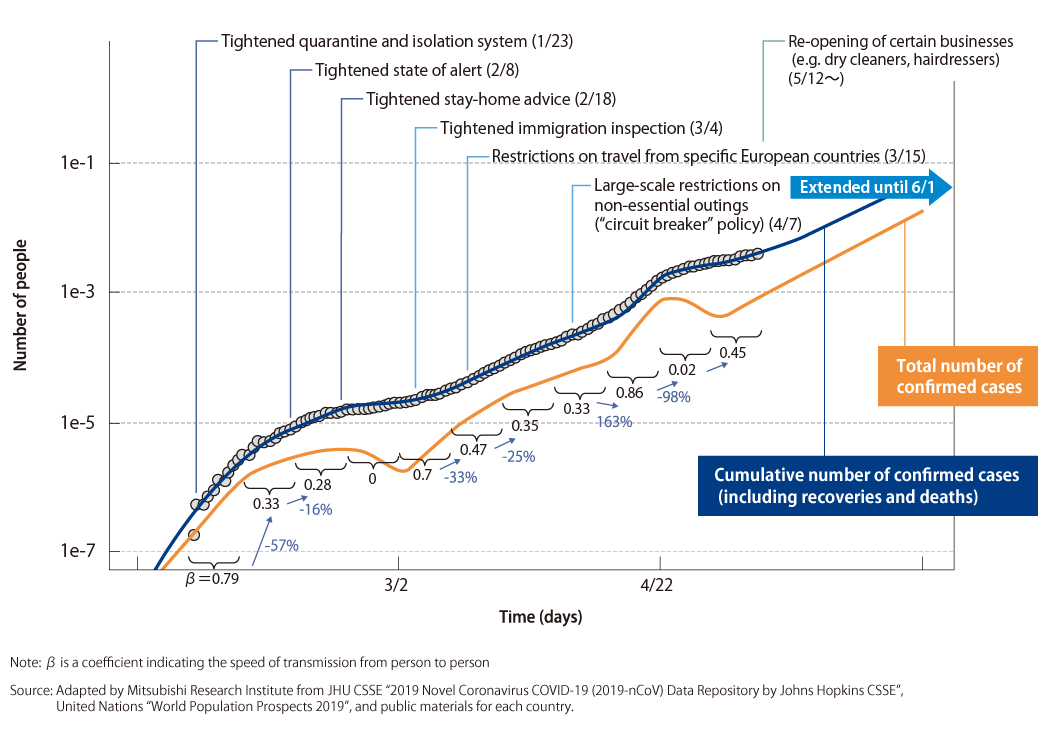Restrictions on our daily life have begun to be eased after a state of emergency in the Tokyo metropolitan area was lifted. It has become evident from the cases in other countries that relaxing vigilance could pose a risk of the second and third waves of infections. Japan has so far had a small number of deaths (at the time of writing), with a cumulative total of 5.9 deaths per one million persons, which is far less than some other countries (Table). It has not yet been clear why it has been the case even though there have been a lot of debates. There is little prospect of an effective vaccine being developed any time soon, therefore, we need to continue a trial-and-error approach without relaxing vigilance as we explore effective but less burdensome ways to control a spread of this virus.
It is necessary to consider the significant difference between the number of people infected with COVID-19 and the number of people who show severe symptoms (this is a major difference from the cases of SARS in 2003). It should be noted that the speed of increase in severity seems quite high once their symptoms start to deteriorate. Also, those who have been infected without any symptoms (asymptomatic carriers) can still transmit the virus to other people around them. In other words, it is a matter of urgency to identify asymptomatic carriers and take necessary measures such as isolating them for a set period of time can prevent a spread of the virus and minimize severe cases and deaths.
Additional measures such as antigen tests and antibody tests have been discussed, so as an urgent need to increase the number of PCR tests, which has already been happening, and to shorten the time required to provide them and those results, yet, nothing seems to be decisive. We also need to assume that there are large numbers of asymptomatic carriers. There is no other way of preventing a sharp increase of severe cases but to continue controls as a protective measure until an effective vaccine will be developed.
It is necessary to consider the significant difference between the number of people infected with COVID-19 and the number of people who show severe symptoms (this is a major difference from the cases of SARS in 2003). It should be noted that the speed of increase in severity seems quite high once their symptoms start to deteriorate. Also, those who have been infected without any symptoms (asymptomatic carriers) can still transmit the virus to other people around them. In other words, it is a matter of urgency to identify asymptomatic carriers and take necessary measures such as isolating them for a set period of time can prevent a spread of the virus and minimize severe cases and deaths.
Additional measures such as antigen tests and antibody tests have been discussed, so as an urgent need to increase the number of PCR tests, which has already been happening, and to shorten the time required to provide them and those results, yet, nothing seems to be decisive. We also need to assume that there are large numbers of asymptomatic carriers. There is no other way of preventing a sharp increase of severe cases but to continue controls as a protective measure until an effective vaccine will be developed.
Table: Number of Confirmed COVID-19 Cases and Deaths by Country (As of May 17, 2020)



